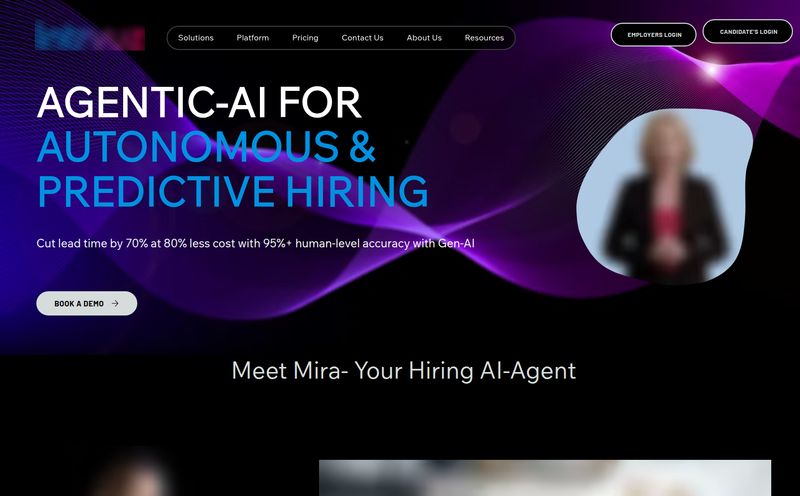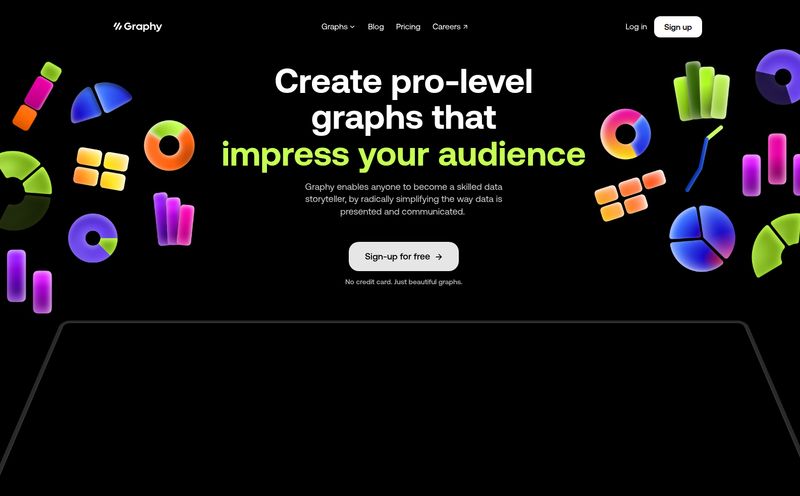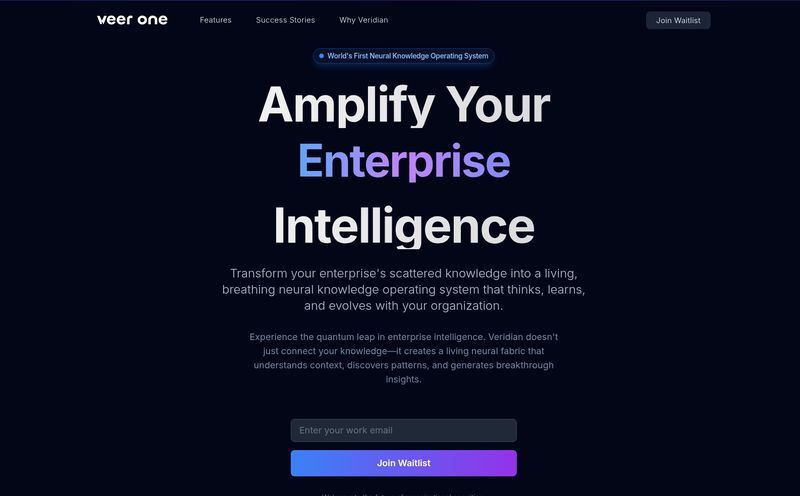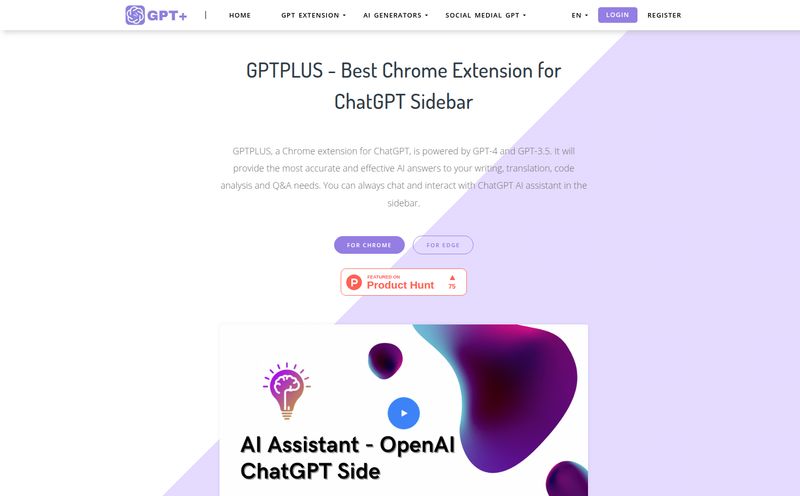I’ve been in the SEO and digital marketing game for years, and if there's one constant, it's data. Piles of it. We're drowning in Google Analytics exports, CRM reports, keyword ranking spreadsheets, and social media metrics. Getting this data is easy. Getting answers from it? That's a whole different beast. It often feels like you're trying to wrestle a greased pig into submission just to ask a simple question like, "Which blog category drove the most sign-ups last quarter?"
It usually involves a dance between exporting a CSV, firing up a Jupyter notebook, and remembering enough `pandas` syntax to not throw my laptop out the window. So when I first heard about PandasAI, my ears perked up. The promise? To make dataframes conversational. To let you just ask your data questions in plain English.
Too good to be true? Maybe. But as someone who loves any tool that promises to save time and headaches, I had to take a closer look.
So, What Exactly is PandasAI?
Let's get the technical bit out of the way first. PandasAI is a Python library. Specifically, it’s a library designed to work with pandas, which is the absolute gold standard for data manipulation in Python. What PandasAI does is inject a layer of generative AI—think the magic behind tools like ChatGPT—directly into your data analysis workflow.
The best way I can describe it is like giving your spreadsheet a brain and a voice. Instead of writing lines of code to filter, group, sort, and calculate, you can just pose a question. For example, instead of this:
df[df['category'] == 'SEO']['revenue'].mean()
You can theoretically just ask:
"What's the average revenue for the SEO category?"
It's an open-source project, which immediately gets a thumbs-up from me. This means it's community-driven, constantly evolving, and, most importantly, you can get started without pulling out a credit card. It’s part of a bigger, exciting trend of democratizing data science, moving it from the sole domain of hardcore coders to something more accessible for the rest of us.
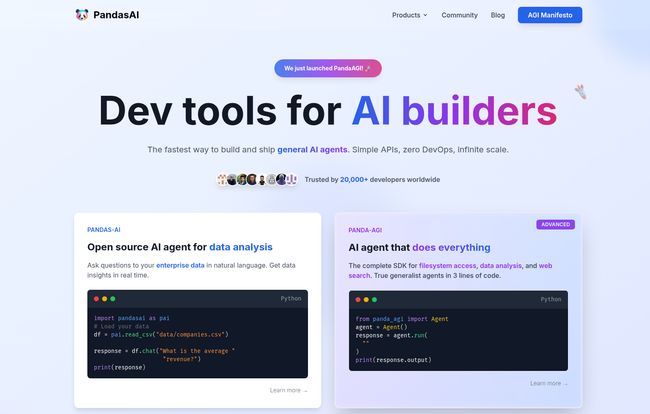
Visit PandasAI
How It Actually Changes the Game for Data Work
This all sounds great in theory, but what does it mean for your day-to-day? As I see it, the impact is pretty significant, and it's not just for data scientists.
From Tedious Code to Simple Conversation
This is the main event. The ability to query data in natural language is a monumental shift. Think about the time saved. No more digging through Stack Overflow to remember the exact syntax for a multi-level group-by operation. For technical marketers or SEOs who are code-adjacent but not full-time developers, this is huge. It lowers the barrier to getting quick, ad-hoc answers from your data sets. You can move faster, test hypotheses quicker, and spend more time on strategy instead of code debugging.
More Than Just Numbers: Visuals and Reports on Demand
Getting a number is one thing. Convincing your boss or a client is another. PandasAI doesn't just stop at giving you a text-based answer; it can also generate charts and plots. Asking, "Show me a bar chart of our traffic by source for the last 30 days," and getting an actual visualization back is, frankly, incredible. This bridges the gap between raw analysis and effective communication. No more exporting data to another tool just to make a pretty graph for your weekly report.
Wrangling All Your Different Data Sources
My marketing data doesn’t live in one neat little box. It's scattered across SQL databases, Google Sheets, CSV files, and sometimes even PDFs from a partner report. PandasAI is built to connect to a variety of these sources. The idea of pointing it at a folder of messy files and being able to ask questions across all of them is… well, it’s the dream, isn't it? It simplifies one of the most painful parts of any analyst's job: data integration and cleaning.
And Then There's Panda-AGI: The Advanced Sibling
As I was looking through their site, I noticed a distinction between `Pandas-AI` and `Panda-AGI`. It seems PandasAI is the focused specialist for data analysis. But Panda-AGI is the next evolution. They call it an "AI agent that does everything."
From what I gather, this is a more general-purpose AI agent. It can do the data analysis stuff, but it can also perform actions like accessing your filesystem or even searching the web to enrich your data. So, you could ask it something like, "Analyze my sales data, find the top-performing product, and then search for recent news articles about its main competitor." That's a whole other level of automation. If PandasAI is your brilliant data analyst, Panda-AGI is the autonomous research team.
The Good, The Bad, and The Code-y
No tool is perfect. Let's get real about the pros and the potential deal-breakers.
The Upsides: What I Genuinely Like
The biggest pro is the democratization of data. I’m a big believer in this. When more people on a team can confidently get answers from data, the whole business gets smarter. It stops being a bottleneck where everyone has to wait for the one "data guy" to run a query. The fact that it's open-source is another massive win. You can look under the hood, customize it, and benefit from a global community of developers (over 20,000 stars on GitHub doesn't happen by accident). And the speed—getting actionable insights in seconds instead of hours—is a tangible benefit for any fast-moving team.
Potential Hiccups to Keep in Mind
Alright, let's ground ourselves. First, while it's more accessible, it's not a complete no-code solution. The examples all start with import pandasai as pal. You still need a Python environment and some basic knowledge to get this up and running. This isn't a tool for your completely non-technical project manager to use on their own... yet.
Second, you have to remember that you're relying on an AI's interpretation of your question. The accuracy of the output is only as good as the AI's understanding. For critical financial reporting, you'll definitely want to double-check its work. Think of it as a brilliant but sometimes fallible assistant. You guide it, and you verify its results. Lastly, the enterprise pricing isn't transparent. If you want the big, scalable solution, you have to "Schedule a demo," which is classic enterprise sales speak for "it depends."
What's the Deal with Pricing?
This is refreshingly simple for once. The core `pandas-ai` library is open-source, so it's free. You can `pip install` it and start using it right now. The PandasAI website also mentions a "Free tier available," which is great for individuals and small teams who want to try things out.
For larger teams or enterprise use, especially if you're looking at the more advanced Panda-AGI agent and need features like enhanced security, dedicated support, or on-premise deployment, you'll need to contact their sales team. This is a pretty standard model for open-source companies.
Who Is PandasAI Really Built For?
So, who should be rushing to try this out? In my opinion, it's a perfect fit for a few groups:
- Data Analysts & Scientists: This is a no-brainer. It's a massive productivity booster for automating routine queries and speeding up exploratory data analysis.
- Technical SEOs & Marketers: If you're comfortable with a little bit of code and live in spreadsheets, this can seriously level up your analytics game. Imagine hooking this up to your Screaming Frog exports or Google Search Console data. Yes please.
- Developers: Anyone building apps that need a data analysis component can integrate PandasAI to provide powerful, natural language features to their users.
- Startups and Small Teams: Teams that have the technical know-how but lack the budget for expensive BI tools like Tableau or Power BI can get incredible power here for free.
Conclusion: Is It Time to Start Talking to Your Data?
PandasAI is more than just a cool gimmick; it feels like a genuine step forward in how we interact with information. It’s not a magic wand that solves every data problem, and it still requires a foundational level of technical skill. But it successfully lowers the barrier between a question and an answer.
For me, the potential is clear. It represents a future where data analysis is less about fighting with syntax and more about curiosity and conversation. It won't replace skilled data analysts, but it will certainly make them faster and more powerful. And for the rest of us, it just might make data a little less intimidating. And that’s something I can definitely get behind.
Frequently Asked Questions
What is PandasAI in simple terms?
PandasAI is a free, open-source Python library that lets you use plain English to ask questions and get answers from your data. It integrates with the popular pandas library, essentially adding a conversational AI layer on top of your spreadsheets and databases.
Is PandasAI completely free to use?
Yes, the core PandasAI library is open-source and free to use. They also offer a free tier for their platform. For advanced enterprise features or the more capable Panda-AGI, you would likely need a commercial plan, which requires contacting their sales team.
Do I need to be a Python expert to use PandasAI?
You don't need to be an expert, but you do need some basic familiarity with Python. You'll need to know how to set up a Python environment, install libraries (like pandas and pandasai), and run a simple script. It's geared towards people who are at least comfortable looking at code.
What is the difference between PandasAI and Panda-AGI?
PandasAI is primarily focused on data analysis—querying data, generating insights, and creating visualizations. Panda-AGI is a more advanced and general AI agent that can perform those tasks plus other actions like searching the web or interacting with files on your computer to complete more complex, multi-step requests.
Can PandasAI connect to my SQL database?
Yes, PandasAI supports connections to various data sources, including SQL databases, as well as file formats like CSV, XLSX, and even PDFs. This allows you to run conversational queries directly on your existing data infrastructure.
How accurate are the insights from PandasAI?
The accuracy depends on the quality of your data and the clarity of your question. The underlying generative AI is very powerful but not infallible. It's best practice to treat it as a highly intelligent assistant—use it to accelerate your work, but always perform a sanity check on critical results to ensure they make sense.
